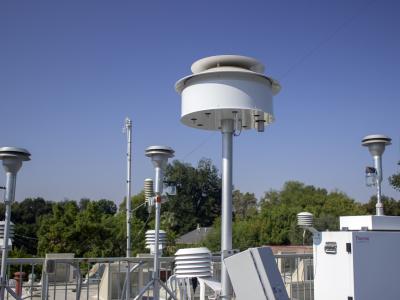As summer temperatures rise across the San Gabriel Valley, residents face a growing risk to their respiratory health. The combination of intense heat, traffic emissions and stagnant air traps pollutants over El Monte, South El Monte, Baldwin Park, Rosemead and Irwindale. This creates conditions that can aggravate asthma, chronic obstructive pulmonary disease and heart conditions.
According to the South Coast Air Quality Management District, ozone levels in this region often peak from June through September. High heat accelerates chemical reactions between sunlight and pollutants, creating ground-level ozone. The American Lung Association ranks the Los Angeles area, which includes the San Gabriel Valley, among the worst in the country for ozone pollution.
Even healthy individuals can experience coughing, wheezing and shortness of breath on high-ozone days. For those with lung disease, exposure can lead to more frequent attacks or hospital visits.
Recognizing Dangerous Air Days
Air quality can change quickly during the summer. Experts recommend residents check the Air Quality Index (AQI) before spending time outdoors. An AQI over 100 means the air is unhealthy for sensitive groups. Levels over 150 are considered unhealthy for everyone.
Residents can track real-time conditions at AirNow.gov or through the South Coast AQMD website. Both sources offer forecasts and alert services that notify users when air quality worsens.
Protecting Respiratory Health
Health professionals advise limiting outdoor activity when pollution is high, especially from midafternoon to early evening. Ozone levels typically peak between 2 p.m. and 7 p.m. Children, seniors and anyone with respiratory illness should stay indoors during these hours.
When inside, keep windows and doors closed. Use air conditioning if available and set it to recirculate to avoid bringing in outside air. Air purifiers with HEPA filters can also reduce indoor pollutants.
For those who must go out, wearing a properly fitted N95 respirator can reduce exposure to particles during wildfire smoke events, though it will not filter ozone. Cloth masks and surgical masks are not effective against gases and fine pollution.
People with asthma or COPD should keep medication accessible. It is important to follow a doctor’s instructions for adjusting inhaler use on days when the AQI is high. Watch for early symptoms such as coughing, tightness in the chest and unusual fatigue. Seek medical attention if breathing becomes difficult.
Community Alerts and Local Support
The Los Angeles County Department of Public Health issues advisories during severe pollution and wildfire events. Residents can sign up for local alerts through NotifyLA. School districts often modify outdoor activities when air quality deteriorates, so parents should watch for notices from local campuses.
Summer air in the San Gabriel Valley can be especially challenging for vulnerable neighbors. Staying informed and taking simple precautions can help reduce health risks during the hottest months.
For more information, visit California Air Resources Board or South Coast AQMD.


